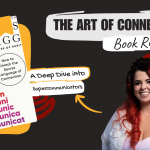How many times have you worked hard to generate a listing appointment, researched the market, toured the home, created a stellar pre-listing package…only to learn the clients hired another agent?
Some agents have a natural knack for reading other people and knowing what to do in a pivotal sales situation. For others it’s a mystery. The good news is, bonding with clients and creating skills for closing deals can all be learned once you understand a few basics.
Today I want to give you some very important tips for making a great first impression, reading your clients and understanding their motivation, handling questions and objections, and recognizing buy signals.
The First Meeting…
According to Patti Wood, author of “Success Signals – Body Language in Business” most face-to-face buying decisions are made within the first three to five minutes of the call. That means 85% of the buying decision is based on not what you say, but what you do non-verbally.
So how to you create non-verbal signals that quickly bond clients to you?
The first step sounds obvious, but many agents blow it: SMILE! No, not some fake, wishy-washy smile, but a sincere gesture projecting your openness. Make sure you’re looking your prospects or clients squarely in the eye.
The second step is to use open body language. Open body language happens when you reveal the palms of your hands, keep your arms unfolded, hands away from the face, and project an open way of receiving your clients.
Another way of showing openness is in your speech tone. You don’t want to seem too excited (a give away for an inexperienced or hype-driven salesperson), and you don’t want to sound like a dud either.
You want to greet your clients the same way you greet your spouse (on a good day, that is!). Be happy to see them, but be sincere and keep your bearings.
The third step is to use the right kind of handshake. The secret of a great handshake is not just in the firmness of your shake (a must!), but in the percentage of palm-to-palm contact. Opening your palm to someone is akin to opening yourself to them.
Finally, a great way to bond with clients is to match your body language with that of your prospect or client. Matching body language is a non-verbal way of telling your clients that you like them.
The idea is that people prefer to do business with those similar to themselves. Watch the body language of people who disagree and you’ll see what I mean (they “mismatch” their body language).
Once you start mimicking your client’s body language, you’ll notice that they start to subconsciously mimic yours. That’s when you have the opportunity to open up – uncross legs and arms, lean forward, and speak directly – and they’ll open themselves to you.
This is a prime signal that you’ve built trust and rapport, and you can guide the direction of the relationship.
Handling Questions and Objections…
Every client presents us with tough questions and objections. That’s the nature of our business. While giving an accurate answer is important, don’t forget about non-verbal ways you communicate to advance the sale.
So how do you handle questions and objections effectively? Here’s a 3-Step process I learned more than 30 years ago, and works nearly every time.
The first step in handling questions or objections is to use “silence” as your ally – and this applies to the phone as much as in person. Before you jump to an answer, allow your prospects to completely finish their point – then pause.
This alone shows that you are in control of the situation and desire to hear-out your client. Plus, it gives you ample time to think through your answer.
The second step is to harmonize with your client. They’re obviously concerned about their issue, otherwise they wouldn’t be asking the question. I want you to indelibly mark your mind with these words: “I understand.”
Always answer objections with “I understand,” then, paraphrase the question or concern the client just asked you back to them.
Why are you doing this?
Because, 1) It helps you uncover the “real” issue from an emotional as well as rational standpoint, 2) So you can validate the concern of the client – a bonding tool, and 3) It allows you to compartmentalize objections or questions so you can handle them easier without causing confusion.
The third step is to answer their question, then follow-up your answer with a question back. Walt Disney used to say “there’s a real question behind every question.” Frequently clients will ask a question that highlights only a symptom or example of their objection, and you need to sort out the real issue from the symptom.
As an overly simple example, let’s say your client begins to ask about the details of a home’s alarm system. A novice would explain just the features, while a pro would realize that the wife wants to feel safe when she’s home alone with her children – and match “security” benefits to features in her answer.
By asking a question back, you are ensuring that the issue they raised has been handled, and you are maintaining control of the situation.
Recognizing Buy Signals…
Nothing happens if you don’t close deals, and knowing when to ask is just as important as knowing how to ask.
You probably know that when a clients starts contemplating furniture placement in a home they’re viewing, they’re getting pretty hot for the home. But there other non-verbal buy signals you should watch for…
The most important non-verbal buy signals come from three areas: Head Gestures, Facial Gestures and Body posture.
When a client tilts their head to one side, it can mean that they’re very interested in what you’re saying. When you see this behavior, make sure you’re making an important point advancing a sale.
A head titled down means they’re being negative and judgmental. Head titled back means they’re exhibiting a superior attitude. A client who is open and accepting will generally keep their head neutral. Look for head gestures the next time you’re in a listing presentation or showing a home.
When a client strokes their chin, it means they are considering making a decision. It’s an important time where you can help the process. Rolling eyes, looking over the top of their glasses, rubbing their nose, or even placing their thumb under their nose with their index finger pointing upward are ALL negative, dismissive or critical actions.
When a client leans their body forward and leaves their arms open, it indicates interest and agreement. This is the very best time to ask for a sale. If they lean back with arms crossed, it shows a lack of interest. Leaning forward with arms crossed can indicate potential aggressive behavior. When a client leans back and opens their arms, they’re showing cautious interest.
You’ll also notice that, when a client mirrors your body language, it’s a tell-tale sign they’re in agreement with you. That’s your prime opportunity to advance the sale.
How do you get better with detecting buy signals and body language?
The same way you get to Carnegie Hall: Practice, practice, practice.







